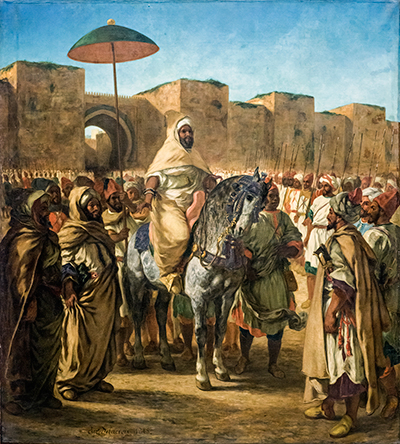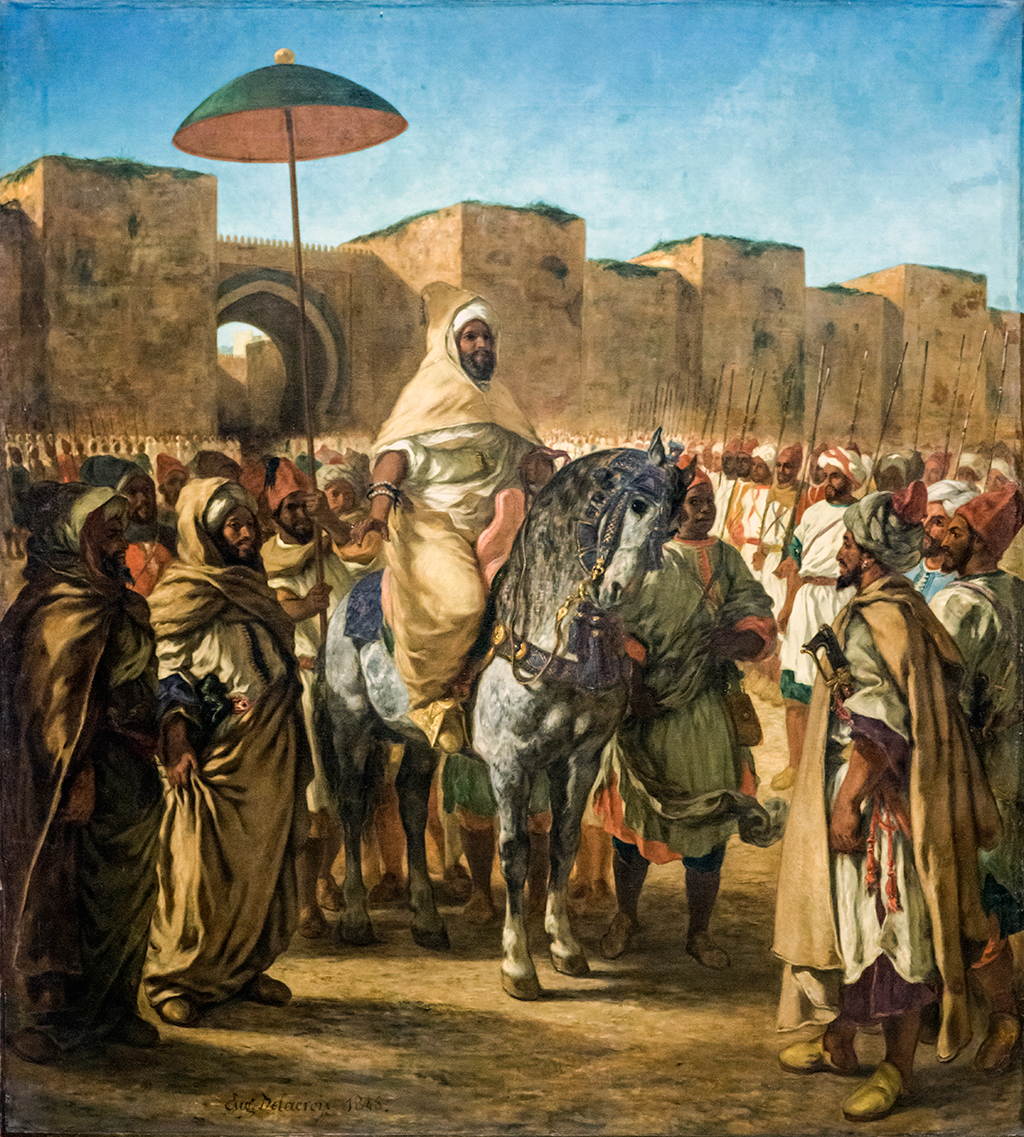Eugene Delacroix produced The Sultan of Morocco in 1845 during an extended period travelling around North Africa. His work within the Orientalist movement added an extra genre to his already impressive oeuvre.
We find a number of interesting elements to this composition. Firstly, the Sultan is raised onto his horse in order to visually lift him above all others - this symbolises his importance within the country. A servant behind him holds a small parasol which aims to keep the bright sun out of his eyes. Others stand around, treating the Sultan respectfully and offering him their full attention. There are a mixture of outfits worn here, with some soldiers sporting shields and spears at the back, where as those in the foreground are wrapped in thick clothing, suggesting an alternative role. The ground is sandy and dry, whilst the architecture behind looks fortified, and is typical of the region during that period.
The artist became truly fond of many aspects of Islamic life and would produce around one hundred paintings and drawings based on his time travelling around these regions. He first went to Spain before heading off to North Africa. The small variations in culture here, as compared to his own life in France, was of great interest to him and inspired plenty of work. The Orientalist movement includes a number of other artists who also felt this same passion and it also had the benefit of teachings others about cultures that may not have had the opportunity to witness with their own eyes during that time. Light is always a key aspect of art, particularly within landscape painting, and these regions tend to flood a scene with bright light which enables us artist to make use of beautiful warm colours which certainly suited the style of Delacroix. Other Orientalist work from Delacroix included Women of Algiers, Arab Horses Fighting in a Stable and Jewish Wedding in Morocco.
There were a large number of study sketches in preparation for this painting. It is fairly complex because of the number of figures that can be found here, each of which have many layers of clothing. Most likely, Delacroix would have constructed the background first, drawing loose outlines for the foreground figures until moving onto them later on. The piece can now be found in the collection of the Musée des Augustins de Toulouse and represents an artwork of historical importance, both for the artist himself but also the nation of Morocco who can refer to this period with some visual evidence that might otherwise not have been available. The Sultan of Morocco at that time was known as Moulay Abd-Er-Rahman and the building is believed to be the palace of Meknès, where he would have resided at the time.





